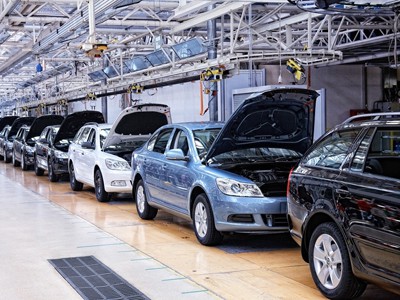Smart Policy Should Pave the Way for Advance of Automated Vehicles

 Technology has changed how people around the globe go about their daily lives, from using their smartphones to place online food orders to having robots now assist in performing surgeries. Technological advancement has also crept into vehicle industries around the world. The hot button topic right now is whether Congress will address the implementation of standards for automated vehicles (AVs), mainly light commercial vehicles such as cars. During these discussions, it is important to remember the international context so the U.S. continues to lead the way.
Technology has changed how people around the globe go about their daily lives, from using their smartphones to place online food orders to having robots now assist in performing surgeries. Technological advancement has also crept into vehicle industries around the world. The hot button topic right now is whether Congress will address the implementation of standards for automated vehicles (AVs), mainly light commercial vehicles such as cars. During these discussions, it is important to remember the international context so the U.S. continues to lead the way.
Proponents of AVs cite the plethora of benefits these vehicles provide, most notably a decrease in traffic accidents. In the U.S. alone, 35,000 people die each year due to highway accidents, 94% of which are due to human error, such as looking at your phone while driving. In contrast, researchers estimate that driverless cars could reduce traffic fatalities by up to 90%. These statistics should prompt the U.S. government to support new technologies that promise to drastically reduce injuries and fatalities.
However, the problem of highway accidents is not unique to the U.S. In 2015 in Greece, there were a total of 11,440 accidents with 793 people killed and 14,096 injured. In the U.K. in 2016, there were 1,792 killed and 179,592 injured. In Japan in 2016, there were a reported 3,904 deaths due to motor vehicle accidents. While these statistics are tragic, they pale in comparison to the U.S. numbers. During 2016, 37,461 people died in crashes on U.S. roadways. If that statistic doesn’t push Congress to do more for AVs, then not much will.
While the U.S. has the world’s most advanced technological prototypes and invests the most amount of money in them, it has not deployed AVs at a rate as high as other countries. Greece already has an automated transport system in the city of Trikala, which circulates throughout the city. In Japan, driverless buses also play an integral role in the small town of Nishikata, 71 miles north of Tokyo. While the U.K. has yet to implement any AV program, it has passed the Modern Transport Bill, outlining steps to be taken to ensure the UK is at the forefront of driverless technology. As of February 2016, this bill has now been finalized as the Vehicle Technology and Aviation Bill. All these countries have encouraged and supported the deployment of AVs at a much faster rate than the U.S.
Critics of the “let’s follow in the foot-steps of what other countries are doing” argue that the U.S. is vastly different in terms of the needs of its citizens compared to other countries, as well as the infrastructure that would make AVs work. However, these differences should instead encourage quick adoption of laws implementing AVs. The U.S. has over a hundred thousand miles of highway, more if local roads are included. These roads cater to millions of trucks transporting goods, as well as cars travelling in and through states. Autonomous vehicles can reduce highway accidents that take thousands of lives per year.
The good news is the U.S. government is making some progress. Two bills that Congress has introduced are worth mentioning. The House of Representatives passed the SELF DRIVE ACT, which “requires the Department of Transportation to conduct research to determine the most cost effective method and terminology for informing consumers about the capabilities and limitations of highly automated vehicles.” On the Senate side, Senators John Thune (R-SD) and Gary Peters (D-MI) on the Committee on Commerce, Science, and Transportation, also recently introduced the bipartisan American Vision for Safer Transportation through Advancement of Revolutionary Technologies (AV Start) Act to help advance the testing and development of self-driving vehicles. There is a chance it could receive a floor vote in the Senate before the end of the year.
The U.S. is already ahead of other countries in the race to perfect automated vehicles. We have the best scientists, equipment, and innovation that allows for these technologies to prosper and thrive. The only roadblock is the government itself. Both state and federal agencies need to allow companies such as Tesla and Waymo to experiment with all of their prototypes on a mass scale. If the U.S. truly has a vision of America First, then it should want to be far ahead of second place.
See more from my colleague Marc Scribner on the future of automated vehicles here.